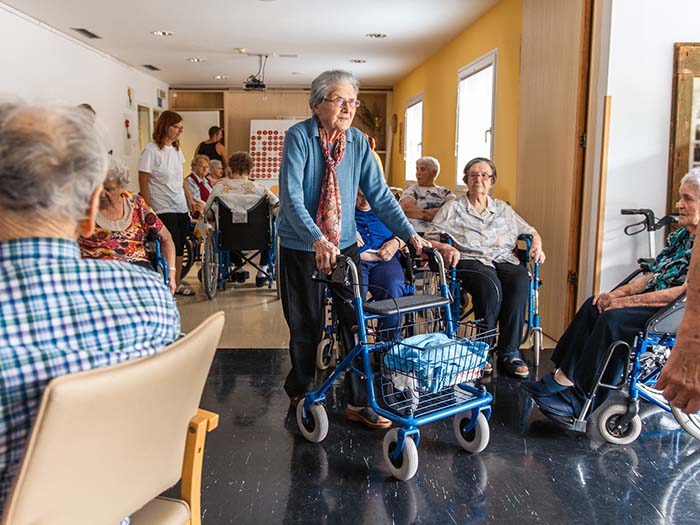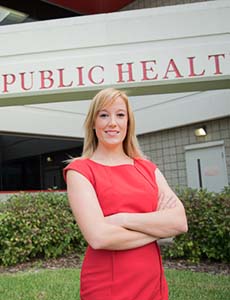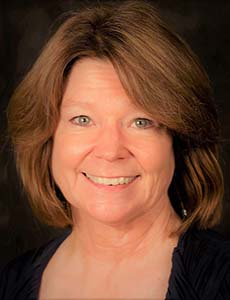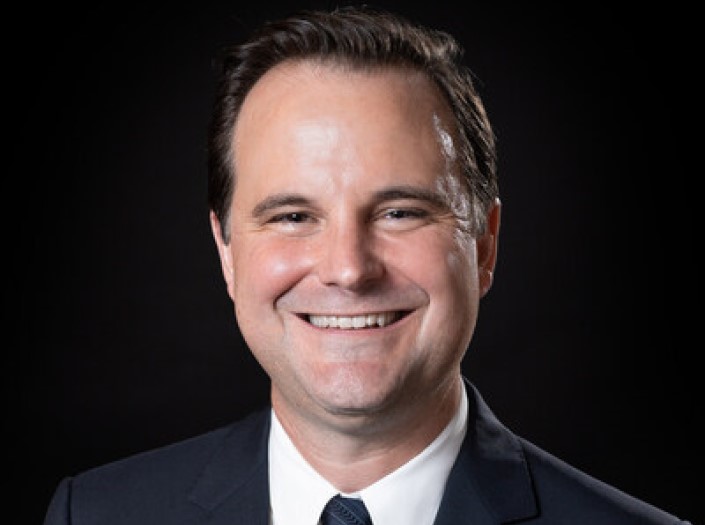Population Surge Meets Storm Surge: Preparing Florida’s Growing Long-Term Care Homes for Inevitable Disaster

“Hide from the wind and run from the water.” Disaster management experts will recognize this phrase.
As more people relocate to places where preparation for and recovery from severe tropical storms and hurricanes is a part of life, this refrain is becoming more widely recognized.
But the steady stream of newcomers to Nat CAT-prone states like Florida could have ripple effects on the work of nursing homes and assisted living operators with the complex charge of providing care for aging adults and people with disabilities before, during and after storms hit.
“[The populations in] most of our counties are [already] between 14 and 20% [age] 65-plus, and we’re seeing a lot of baby boomers now moving into that 65-plus range,” said Elizabeth Dunn, University of South Florida instructor of global disaster management, humanitarian relief and homeland security (GHH).
“So, we were already going to see a huge jump in about 5 to 10% age increase, without everybody moving to Florida,” Dunn continued.
And many of those new Floridians will be preparing to retire in the next five to 10 years, Dunn said.

Elizabeth Dunn, instructor, global disaster management, humanitarian relief and homeland security (GHH), University of South Florida
“Our aging population is going to be extremely high in comparison to other states, and we already have a lot of limitations,” Dunn said.
Not all new Florida seniors will require extensive caregiving support into their golden years, but the state’s in-demand long-term care industry could face challenges should there be a surge in demand.
Despite their recurring efforts to perform hazard vulnerability assessments and daily reviews of their emergency response plans, operators of the nearly 4,000 licensed long-term care (LTC) facilities throughout the state grapple from June through November with the dilemma of staying put or evacuating approximately 155,000 aging adults residing in their facilities.
Now add to the equation that many people receiving professional care over the next decade or so could be completely reliant on these caregiving facilities. “A lot of our clients are in nursing homes or assisted living facilities here, but their daughter and son might live in Ohio [for example],” Dunn said.
In emergency situations, Dunn explained, “you might think, ‘OK, well, we can just have their family members come.’ ” But with residents’ next of kin often a multi-hour flight away, long-term care operators could be the only emergency support for a vulnerable part of the state’s population, people who rely upon consistency of care for their survival when disasters strike.
Allow Ample Time to Evacuate
For care operators in flood zones, the decision regarding how to respond when storms are brewing may be clear: Run!
But the preparations to do so must be meticulously crafted, factoring in everything from medications to transportation to how well the temporary accommodations are equipped to handle their specific needs. “Every day outside their normal environment is risky,” said Lindsay J. Peterson, interim director, Florida Policy Exchange Center on Aging at the University of South Florida, “because moving vulnerable people with multiple chronic conditions — dementia, heart failure, possibly — just that by itself compromises their health.”
Given that Florida’s population increased by 1.9% (to over 22 million) between 2021 and 2022, compared to its 2010-2020 population growth rate of 1.37%, experts like Dunn say long-term care facilities, especially those located in flood zones, may need to brace for gridlock when it’s time to evacuate residents.
More vehicles could be on the roads when evacuation orders are issued, making the journey to safety longer and potentially more perilous.
“Each county, each community is going to have its own challenges … [but] long-term care facilities in the state of Florida have to have an evacuation plan if they are in a flood zone,” Dunn said.
Consider Pinellas County, an idyllic peninsula connected to Tampa metro area by three bridges. “The majority of that county is in a flood area or evacuation zone,” Dunn said.
When mandatory evacuation orders are issued, “the only way to get off [the peninsula], if those bridges close, is going up and around and over, which poses a big challenge for that county,” Dunn explained.
“You might be sitting in traffic for 48 hours if you’re trying to get out of Pinellas County.”
Of the peninsula’s 65 nursing homes and 138 assisted living centers — with a combined 16,000 beds for aging adults with varying health care needs — Dunn said, “That’s a huge thing that we have to think about in terms of planning: How long will it take you, in an evacuation order, to get those individuals out?”
But evacuating does not necessarily guarantee safety. Peterson’s colleagues from the University of South Florida and Brown University have found that the rates of death and hospitalization of long-term care residents exposed to hurricanes are even higher when they are subjected to an evacuation.
Plus, being on the road for long periods of time during an evacuation could also be fatal.
Many senior care operators throughout the country will recall the disturbing 2005 incident of 24 elderly people losing their lives when their coach bus exploded during a 15-hour journey fleeing the Dallas, Texas, area when Hurricane Rita was approaching.
No Power, No Water
Traffic is already a major issue in several Florida metropolitan areas, and long-term care operators do have to be mindful of how long it could take to evacuate their residents and staff.
But population growth does not automatically have to spell trouble for long-term care facilities.
University of Pennsylvania population studies researcher Eugenio Paglino said it’s important to note that population growth does not happen in a vacuum, and it’s generally triggered by economic growth.
“Which means that there are sustainable pathways in which the supply of resources keeps up with the increasing demand,” he told Risk & Insurance in an email.
And Florida is slated to receive major funding from the most recent federal infrastructure bill, which could improve road conditions and keep traffic flowing.
Nevertheless, Paglino said, recent population growth in the U.S. has come with cautionary tales. The influx of newcomers to Arizona, for example, outpaced the ability of some communities to provide basic resources, like access to potable water, to some of their residents.
When tropical storms hit, however, it’s often the access to electricity that is compromised, which makes staying put a precarious undertaking, as Jennifer Gavin, area director of Sunrise communities, experienced firsthand.
In October 2018, Hurricane Michael swiftly descended on the Panama City compound of three homes where Gavin led a team of 15 staff who were providing long-term care for 24 adults with intellectual and developmental disabilities.
“Before the hurricane actually hit, we were told that we’re not in the evacuation zone — that we should be fine,” Gavin said.
But Michael turned out to be far more powerful than expected. Initially forecast as a category 2 or 3 hurricane, Michael’s wind speeds rapidly intensified to Category 5 level.
And as Gavin’s communication with emergency management showed, the panhandle region was not anticipating such widespread flooding and destruction based on previous hurricane patterns.
With no time to move the medically fragile Panama City residents to safety, Gavin’s team decided to shelter in place.
“We did not evacuate, which was the right call,” said Julie Krug, vice president of risk management, Sunrise. “Everybody was safe. We had property damage, but no human damage.”
Though they had two weeks’ worth of food, medication and supplies on hand, per state health mandates and their own extensive internal emergency plans, the damage to all three homes on the compound was too great to keep the residents on site once the winds settled and the rain ceased.
“We decided to evacuate because we didn’t have electricity; we didn’t have water,” Gavin recalled.
The moment the storm lifted, Sunrise vehicles transported the 24 Panama City residents and 15 staff members two hours east and inland to a sister facility in Tallahassee, per their emergency preparedness plans.
Instead of rebuilding, Sunrise opted to permanently close the Panama City compound and find alternate homes within its network for the residents. Many of the Sunrise staff were also displaced from their homes and resided for three months in the office of the Tallahassee facility.
“It was chaotic,” Gavin said.
Generators Can Only Go So Long
Whether storms pummel the entire state (as Hurricane Irma did in 2017) or unleash their fury on one region, electrical outages are a reality for which long-term care operators are also required to prepare.
Since 2018, the State of Florida has required all long-term care operators to have generators and keep fuel on site to maintain electricity from 48 to 96 hours (depending on the size of the facility) when power outages occur.
The mandate went into effect just months after Hurricane Irma’s winds knocked out the power for an extended period at a Hollywood, Florida, rehabilitation center, leaving 12 elderly people dead from exposure to severe indoor heat and humidity.

Lindsay J. Peterson, interim director, Florida Policy Exchange Center on Aging at the University of South Florida
While some operators struggled at first to meet the requirement due to engineering costs, fuel requirements and neighborhood battles over noise level ordinances, Peterson said, the vast majority of operators she has spoken with over the years are glad to have made the investment.
“Because we have a lot of situations where just regular power outages and different things happen,” she said. “With the heat in Florida and older adults, it doesn’t take much to cause someone to begin to go downhill and become overheated. Heatstroke and heat-related trauma are really serious, and it can happen very fast.”
But generators can only keep things cool for so long. With the power grid ever more strained as demand from new residential areas increases, both Dunn and Peterson have seen in their work that there’s no telling how long it could take to fully restore power.
“There was a nursing home in South Florida that was without power for two weeks [after Irma],” Peterson recalled. “They did have generators, but they were just going and going, and they finally gave up … Nobody’s required to have generators that are going to go for two weeks … but the power [outage] was so massive across the state.”
Plus, Dunn added, fueling a generator for 96 hours is one thing, “but what about two weeks, three weeks from now?”
She continued: “It’s making sure that [LTC operators] have a longer-term plan that thinks about if you need to start moving people, because now it’s not feasible to stay; you can’t get supplies in and out, you can’t get food, and your employees can’t get to work.”
Leaning On Community
As the South Florida nursing home generator was pushed to its limit after Hurricane Irma, Peterson said, the staff and managers began putting out SOS messages via social media and text messages with contacts in the community.
“All kinds of people came to help them; they brought ice, and they brought cold drinks, and they did what they could to help the nursing home keep the residents cool,” Peterson continued. “So, it’s having community connections ― knowing who you can call on in an emergency when everything in your plan falls apart or this unexpected thing happens, like there’s no electricity for weeks.”
Dunn agrees that being thoroughly connected to the people and adjacent business community in an area is essential in order for long-term care operators to line up backup solutions in their emergency response plans.
And the relationships with the reviewers and emergency coordination officers at the state’s Agency for Health Care Administration (AHCA) and the Division of Emergency Management are among the most important for long-term care operators to cultivate.
“Their full-time job is to review [emergency] plans,” Dunn said. And they help LTC operators think through all the what-ifs and tap into solutions such as special medical needs shelters designed and equipped to withstand hurricanes, or accommodations in other counties.
But, Dunn said, it’s the participation in local health and medical preparedness coalitions that can help LTC operators of all sizes leverage resources that they may have never even considered.
“Whether it’s a hospital or assisted living facility or a nursing home, a lot of exchange of knowledge is done within that community,” Dunn said, “because they’re going to understand their clients, they’re going to understand some of the challenges it takes to evacuate. They’re going to be able to share best practices or things that they thought would work that didn’t work, historically.”
And the coalitions will organize tabletop exercises that get all health care operators thinking about their continuity of operations plans, or COOPs, Dunn said: “Thinking through any kind of worst-case scenario that could occur, and then coming up with a solution.
“They have events, planning and training resources … They work very closely with anybody that works in the health care sector so that they feel more confident with their planning,” she added.
Regrettably, as participation in coalitions is optional and not state-mandated, Dunn said, some operators may not know their county coalitions exist or may be reluctant to participate in the drills and tabletop exercises offered for fear of being critiqued or called out for inadequacies in their operations.
AHCA may require some operators to do exercises, Dunn noted, “but it might be that they’re exercising in their own facility and not engaging in the larger community, which is where the benefit could occur and there is exchange of knowledge across multiple facilities.
“So, getting involved or engaging in exercises with their sister facilities — or participating in exercises with the local health department or other agencies that are outside their facility — can be extremely beneficial in the exchange of thoughts, to help identify ways to address concerns and to think outside the box about solutions.”
And in the aftermath of natural disasters like tropical storms, UPENN’S Paglino noted, demand for health services in places where the population has grown rapidly could increase, making the coordination and collaboration between health care providers critical to address any mismatches between the supply and demand of care services.
If hospitals become overwhelmed with patients following a tropical storm, as they well might, the pre-disaster support offered by coalitions gives health care providers an opportunity to understand the interplay between their resources, and they can each keep their patients as safe as possible.
“So, at least if you’re doing an exercise,” Dunn said, “whether it be a drill or a tabletop discussion or actual practice, it at least allows [everyone] to identify and then address those issues way before they become a major problem, especially where you’re talking about loss of life.” &
This story is Part 1 in a series on long-term care. You can read Part 2 here.










